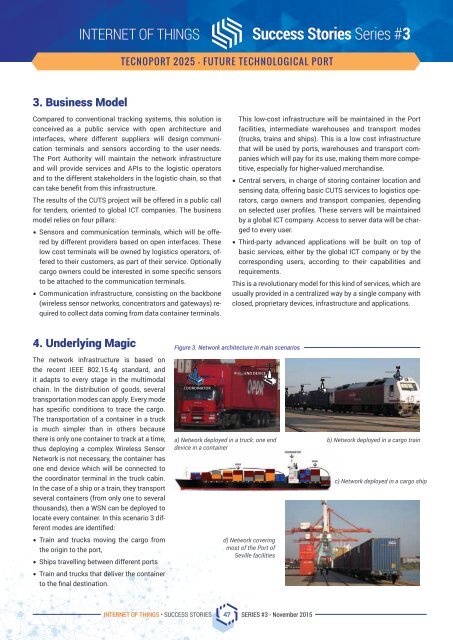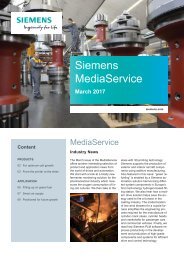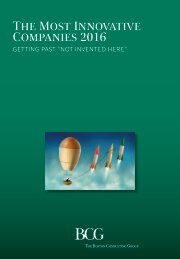Success Stories
VEZSJ
VEZSJ
Create successful ePaper yourself
Turn your PDF publications into a flip-book with our unique Google optimized e-Paper software.
Internet of Things <strong>Success</strong> <strong>Stories</strong> Series #3<br />
TECNOPORT 2025 – Future Technological PORT<br />
3. Business Model<br />
Compared to conventional tracking systems, this solution is<br />
conceived as a public service with open architecture and<br />
interfaces, where different suppliers will design communication<br />
terminals and sensors according to the user needs.<br />
The Port Authority will maintain the network infrastructure<br />
and will provide services and APIs to the logistic operators<br />
and to the different stakeholders in the logistic chain, so that<br />
can take benefit from this infrastructure.<br />
The results of the CUTS project will be offered in a public call<br />
for tenders, oriented to global ICT companies. The business<br />
model relies on four pillars:<br />
• Sensors and communication terminals, which will be offered<br />
by different providers based on open interfaces. These<br />
low cost terminals will be owned by logistics operators, offered<br />
to their customers, as part of their service. Optionally<br />
cargo owners could be interested in some specific sensors<br />
to be attached to the communication terminals.<br />
• Communication infrastructure, consisting on the backbone<br />
(wireless sensor networks, concentrators and gateways) required<br />
to collect data coming from data container terminals.<br />
This low-cost infrastructure will be maintained in the Port<br />
facilities, intermediate warehouses and transport modes<br />
(trucks, trains and ships). This is a low cost infrastructure<br />
that will be used by ports, warehouses and transport companies<br />
which will pay for its use, making them more competitive,<br />
especially for higher-valued merchandise.<br />
• Central servers, in charge of storing container location and<br />
sensing data, offering basic CUTS services to logistics operators,<br />
cargo owners and transport companies, depending<br />
on selected user profiles. These servers will be maintained<br />
by a global ICT company. Access to server data will be charged<br />
to every user.<br />
• Third-party advanced applications will be built on top of<br />
basic services, either by the global ICT company or by the<br />
corresponding users, according to their capabilities and<br />
requirements.<br />
This is a revolutionary model for this kind of services, which are<br />
usually provided in a centralized way by a single company with<br />
closed, proprietary devices, infrastructure and applications.<br />
4. Underlying Magic<br />
The network infrastructure is based on<br />
the recent IEEE 802.15.4g standard, and<br />
it adapts to every stage in the multimodal<br />
chain. In the distribution of goods, several<br />
transportation modes can apply. Every mode<br />
has specific conditions to trace the cargo.<br />
The transportation of a container in a truck<br />
is much simpler than in others because<br />
there is only one container to track at a time,<br />
thus deploying a complex Wireless Sensor<br />
Network is not necessary, the container has<br />
one end device which will be connected to<br />
the coordinator terminal in the truck cabin.<br />
In the case of a ship or a train, they transport<br />
several containers (from only one to several<br />
thousands), then a WSN can be deployed to<br />
locate every container. In this scenario 3 different<br />
modes are identified:<br />
• Train and trucks moving the cargo from<br />
the origin to the port,<br />
• Ships travelling between different ports<br />
• Train and trucks that deliver the container<br />
to the final destination.<br />
Figure 3. Network architecture in main scenarios<br />
COORDINATOR<br />
END DEVICE<br />
a) Network deployed in a truck: one end<br />
device in a container<br />
d) Network covering<br />
most of the Port of<br />
Seville facilities<br />
END DEVICE n<br />
END DEVICE 2<br />
COORDINATOR<br />
END DEVICE 1<br />
b) Network deployed in a cargo train<br />
c) Network deployed in a cargo ship<br />
Internet of Things • <strong>Success</strong> <strong>Stories</strong> 47 SERIES #3 - November 2015









